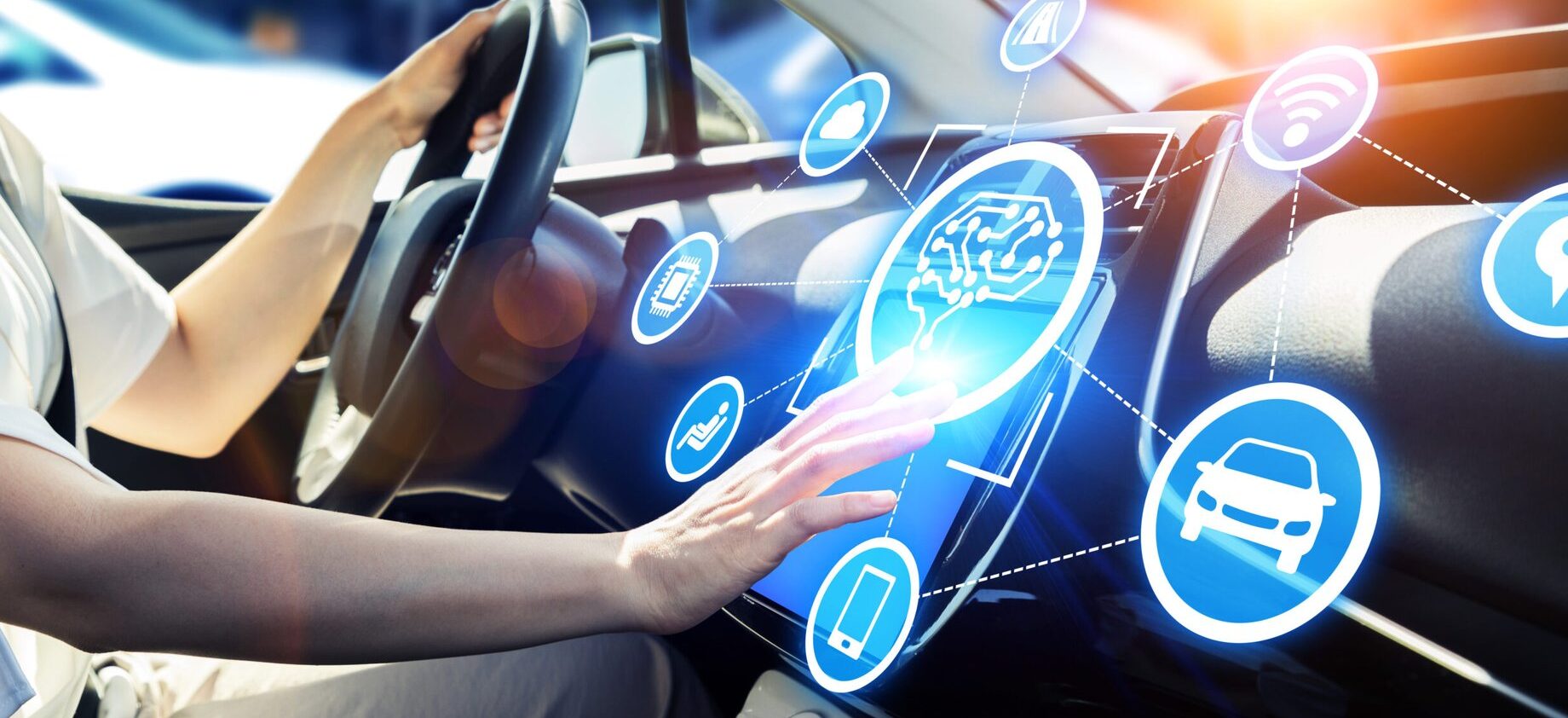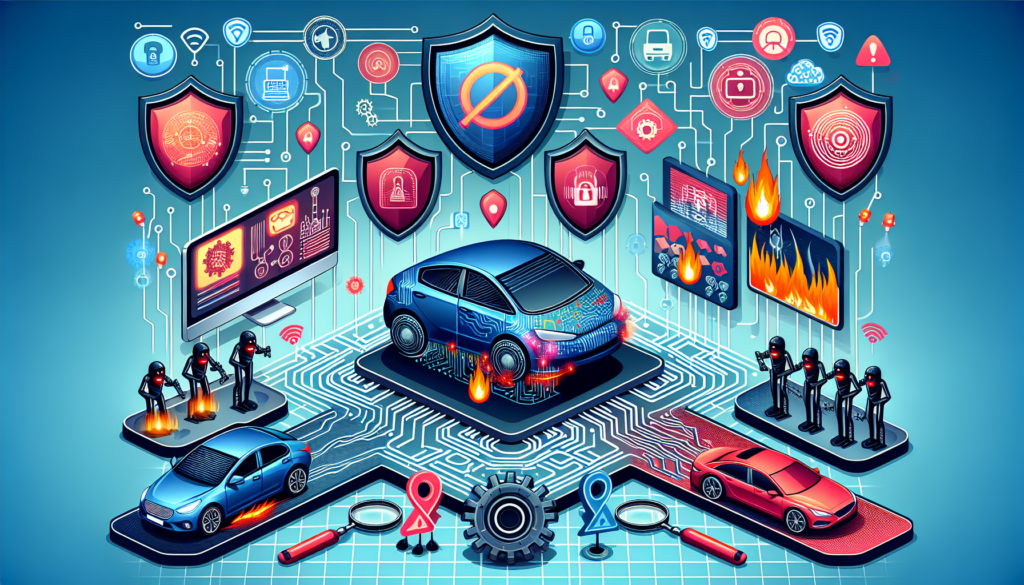
Cybersecurity in Autonomous Vehicles.
In Cybersecurity for Autonomous Vehicles: Securing the Future
As the automotive industry races toward a future filled with autonomous vehicles, the significance of cybersecurity for these advanced technologies cannot be overstated. Autonomous vehicles promise a revolution in transportation, delivering enhanced safety, efficiency, and convenience. However, with such innovation comes the critical responsibility to ensure these systems are protected from potential cyber threats. At Teamwin Global Technologica, we understand the paramount importance of safeguarding these innovative systems, providing peace of mind to those who embrace this technological frontier. In doing so, we aim to fortify the future of transportation, ensuring that every journey in a connected and autonomous vehicle is secure and reliable.
Introduction to Cybersecurity in Autonomous Vehicles
The Importance of Cybersecurity for Autonomous Driving
In a world where autonomous driving is becoming increasingly prevalent, the need for robust cybersecurity is more critical than ever. Autonomous vehicles rely heavily on complex control systems and interconnected networks, making them susceptible to various cybersecurity threats. These threats can range from malware attacks to more sophisticated spoofing attacks, all of which can jeopardize the safety and security of passengers. Ensuring comprehensive cybersecurity measures are in place is essential to protect against potential vulnerabilities. By securing autonomous vehicle systems, we not only protect individuals but also maintain the integrity of the entire intelligent transportation system. At Teamwin Global Technologica, we are dedicated to anticipating and mitigating cyber risks, empowering clients with robust defense strategies for the cybersecurity of autonomous vehicles.
Overview of Autonomous Vehicle Technology
Autonomous vehicle technology represents a significant leap forward in the evolution of modern vehicles. By integrating machine learning and advanced detection systems, autonomous cars can navigate roads with minimal human intervention. These technologies rely on a network of sensors and control systems, all of which are potential entry points for cyber attacks. The internet of vehicles enables data sharing among connected vehicles, enhancing operational efficiency but also expanding the attack surface for potential cybersecurity challenges. As we move towards fully autonomous vehicles, understanding the intricacies of vehicle systems is vital to developing effective cybersecurity practices. At Teamwin Global Technologica, we prioritize securing these cutting-edge technologies, ensuring that innovation does not come at the expense of safety and security.
Current State of Cybersecurity in Autonomous Vehicles
The current state of cybersecurity in autonomous vehicles is a landscape of both challenges and opportunities. While automotive cybersecurity has made significant strides, new vulnerabilities continue to emerge as technology evolves. The integration of connected and autonomous vehicles into broader transportation systems increases the complexity of managing security risks. Despite these challenges, advancements in intrusion detection systems and cybersecurity measures offer promising avenues for defense. Addressing these security challenges is imperative to prevent potential cyber attacks that could disrupt transportation systems. Teamwin Global Technologica is committed to providing reliable and proactive cybersecurity solutions, reassuring our customers that their autonomous vehicle systems remain secure, safe, and resilient against emerging threats.
Security Challenges in Autonomous Vehicle Systems
Cybersecurity Risks and Vulnerabilities
As autonomous vehicle systems become more ingrained in our transportation infrastructure, the cybersecurity risks associated with these connected autonomous vehicles are increasingly critical. Autonomous vehicles, reliant on intricate control systems and extensive networks, present a large attack surface for potential cyber threats. Vulnerabilities within these systems can be exploited, leading to severe consequences for both safety and privacy. For instance, the internet of vehicles, while enhancing connectivity, also poses significant security risks by expanding the potential entry points for cyber attacks. At Teamwin Global Technologica, we recognize the paramount importance of addressing these vulnerabilities. By implementing robust cybersecurity measures, we aim to secure the integrity of autonomous driving systems and ensure the safety and security of all stakeholders involved.
Types of Attacks on Autonomous Vehicles
Autonomous vehicles face a myriad of potential cyber attacks, each with unique implications for vehicle security and passenger safety, necessitating a thorough review of attacks. Common attack types include:
- Spoofing attacks, which can mislead vehicle sensors and control systems, potentially leading to erroneous navigation and safety breaches.
- Distributed denial-of-service (DDoS) attacks that can overwhelm vehicle systems, disrupting operations and compromising the reliability of connected and autonomous vehicles.
Such attacks highlight the need for comprehensive cybersecurity practices that protect against adversarial attacks. Teamwin Global Technologica is dedicated to fortifying the defenses of autonomous vehicle systems, ensuring that they remain resilient against such sophisticated cyber threats and offering peace of mind to manufacturers and users alike.
Malware Attacks and Their Impact
Malware attacks pose a significant threat to the security of autonomous vehicle systems, with the potential to disrupt operations and compromise passenger safety. These malicious software attacks can infiltrate a vehicle’s network, manipulating control systems and potentially causing unauthorized access to sensitive data. The impact of such attacks extends beyond individual vehicles, as they can affect entire transportation systems, highlighting the need for vigilant cybersecurity measures. At Teamwin Global Technologica, we prioritize the detection and prevention of malware attacks through advanced intrusion detection systems and continuous monitoring to enhance the cybersecurity of autonomous vehicles. By safeguarding against these cyber threats, we ensure the ongoing safety, reliability, and integrity of autonomous driving technologies, ultimately securing the future of transportation.
Cybersecurity Measures for Connected Vehicles
Implementing Cybersecurity Protocols
Implementing robust cybersecurity protocols is critical for securing connected and autonomous vehicles against a myriad of cyber threats. At Teamwin Global Technologica, we prioritize the deployment of comprehensive cybersecurity measures that fortify vehicle systems against potential vulnerabilities. These protocols encompass advanced detection systems and intrusion detection systems, designed to identify and neutralize threats before they can exploit any weaknesses in the control systems of connected autonomous vehicles. By integrating these sophisticated defenses, we ensure that both autonomous cars and connected vehicles are shielded from cyber attacks, safeguarding the integrity of autonomous driving systems. Our commitment to cybersecurity for autonomous vehicles is unwavering, as we understand that protecting these advanced technologies is paramount to maintaining safety and security in modern transportation systems.
Machine Learning in Cybersecurity Solutions
Machine learning plays an instrumental role in enhancing cybersecurity solutions for connected autonomous vehicles. By leveraging the power of machine learning, we can anticipate and mitigate cyber threats with increased accuracy and efficiency. These intelligent systems analyze vast amounts of data from vehicle networks, enabling the early detection of anomalies that may indicate a security risk. At Teamwin Global Technologica, we harness machine learning to develop adaptive cybersecurity practices that evolve in response to emerging threats, ensuring ongoing protection for autonomous vehicle systems. This approach not only strengthens vehicle security but also builds trust with our clients, assuring them that their autonomous driving technologies are defended by cutting-edge, proactive solutions.
Securing Communication Systems in Autonomous Driving
Securing communication systems within autonomous driving technologies is a critical aspect of ensuring the safety and reliability of connected autonomous vehicles against potential cyber threats. The internet of vehicles facilitates seamless data exchange between vehicles and infrastructure, but it also introduces security challenges that must be addressed. At Teamwin Global Technologica, we focus on safeguarding these communication channels from potential cyber attacks, such as spoofing attacks and malware infiltrations. By implementing rigorous cybersecurity measures, we protect the integrity of data transmitted within and between connected autonomous vehicles. Our dedication to fortifying these systems underscores our commitment to delivering secure and resilient transportation solutions, providing peace of mind to all stakeholders involved in the intelligent transportation system.
Future of Cybersecurity in Autonomous Vehicles
Challenges and Solutions for Securing Autonomous Vehicles
The future of cybersecurity in the realm of autonomous vehicles is fraught with both challenges and promising solutions. As autonomous vehicle systems become more sophisticated, the attack surface for potential cyber threats expands, requiring innovative cybersecurity measures to ensure safety and security. Key challenges include the integration of detection systems capable of identifying and responding to varied cyber attacks, such as malware and spoofing attacks. Solutions lie in the deployment of advanced intrusion detection systems and the application of machine learning to predict and mitigate security risks proactively. At Teamwin Global Technologica, we are dedicated to empowering our clients with comprehensive cybersecurity practices that address these complex challenges, ensuring that autonomous driving technologies remain secure and reliable for future generations.
The Role of Automotive Cybersecurity Standards
Automotive cybersecurity standards play a critical role in safeguarding the integrity of autonomous vehicle systems. These standards provide a framework for implementing cybersecurity measures that protect against vulnerabilities and security threats inherent in the cybersecurity of autonomous vehicles. By adhering to stringent automotive cybersecurity guidelines, manufacturers and developers can ensure that their automated vehicles meet the highest safety and security benchmarks. At Teamwin Global Technologica, we understand the paramount importance of these standards in maintaining the trust and confidence of our customers. We work diligently to align our solutions with industry standards, offering our clients peace of mind and assurance that their autonomous driving systems are fortified against potential cyber threats. Our commitment to these standards underscores our dedication to delivering secure and resilient intelligent transportation systems.
Preparing for Emerging Cybersecurity Threats
As the landscape of autonomous vehicles continues to evolve, preparing for emerging cybersecurity threats becomes increasingly crucial. The integration of electric vehicles and connected vehicle technology introduces new security challenges that demand forward-thinking cybersecurity practices. Anticipating these threats requires a proactive approach, leveraging machine learning and other advanced technologies to predict and counteract potential vulnerabilities before they can be exploited. At Teamwin Global Technologica, we prioritize the development of adaptive cybersecurity solutions that evolve alongside the technologies they protect. By staying ahead of emerging threats, we ensure that our clients’ autonomous vehicle systems remain secure and resilient, safeguarding their operations and preserving the trust of those who rely on modern vehicles for safety and efficiency. Our unwavering commitment to the cybersecurity of autonomous vehicles positions us as a leader in protecting the future of transportation systems.
5 Surprising Facts About Cybersecurity in Autonomous Vehicles
- Autonomous vehicles rely on over 100 million lines of code, making them more complex than the software used in commercial airplanes.
- Cybersecurity experts estimate that a single autonomous vehicle can be hacked remotely, potentially compromising the safety of passengers and pedestrians.
- Most autonomous vehicles are equipped with multiple sensors and cameras, but these can also serve as entry points for cyberattacks if not properly secured.
- Regulatory bodies are increasingly focusing on cybersecurity standards for autonomous vehicles, but many manufacturers still lack comprehensive security protocols.
- Research shows that nearly 80% of consumers are concerned about the cybersecurity of autonomous vehicles, impacting public acceptance and adoption rates.
What are the main cybersecurity challenges in autonomous vehicles?
The main cybersecurity challenges in autonomous vehicles include vulnerabilities in vehicle systems, potential cyber attacks from malicious actors, and security risks associated with connected and autonomous vehicles. As these vehicles rely heavily on software and communication systems, they are susceptible to malware and other cyber threats that could compromise the integrity of their operation.
How do cybersecurity issues in autonomous vehicles impact safety and security?
Cybersecurity issues in autonomous vehicles can significantly impact safety and security by creating opportunities for cyber attacks that could endanger passengers, pedestrians, and other road users. An effective cybersecurity strategy is crucial to ensure that autonomous driving systems are protected against intrusions that could lead to accidents or unauthorized control of the vehicle.
What measures can enhance cybersecurity for autonomous vehicles?
To enhance cybersecurity for autonomous vehicles, manufacturers can implement robust intrusion detection systems, regular software updates, and machine learning algorithms that can identify and respond to cyber threats in real-time. Additionally, establishing cybersecurity standards and best practices can help mitigate risks associated with vehicle systems.
What types of cyber threats are associated with autonomous driving technology?
Cyber threats associated with autonomous driving technology include malware attacks, spoofing attacks, and adversarial attacks that target the vehicle’s control systems. These threats can exploit vulnerabilities in the connected vehicle infrastructure, posing significant risks to the safety and functionality of autonomous systems.
How do vehicle manufacturers ensure the security of autonomous vehicles?
Vehicle manufacturers ensure the security of autonomous vehicles by adopting comprehensive cybersecurity strategies that include risk assessments, threat modeling, and the integration of secure software development practices. Continuous monitoring of vehicle cybersecurity and collaboration with cybersecurity experts are also essential to address emerging threats.
What is the role of machine learning in securing autonomous vehicles?
Machine learning plays a critical role in securing autonomous vehicles by enabling advanced detection systems that can identify unusual patterns or behaviors indicative of a cyber attack. By analyzing vast amounts of data from vehicle systems, machine learning algorithms can enhance threat detection and response capabilities, making autonomous driving technology more resilient to attacks.
What are the potential security risks in connected and automated vehicles?
The potential security risks in connected and automated vehicles include unauthorized access to vehicle systems, data breaches, and the manipulation of vehicle functions. As these vehicles communicate with other connected devices and infrastructure, they face an expanded attack surface that can be exploited by cybercriminals.
What is the future of cybersecurity in autonomous vehicles?
The future of cybersecurity in autonomous vehicles will likely see the development of more sophisticated cybersecurity measures, increased collaboration between industry stakeholders, and the establishment of regulatory frameworks to ensure compliance with cybersecurity standards. As the adoption and deployment of autonomous vehicles grow, staying ahead of cybersecurity threats will be paramount to maintaining public trust and safety.







